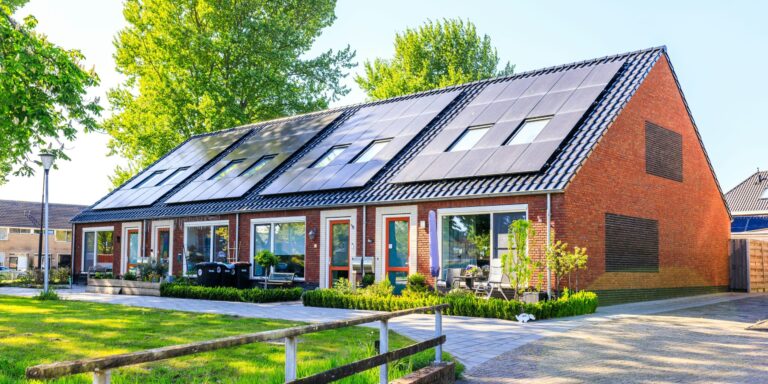Commercial real estate is entering a pivotal moment in 2025 as solar power adoption accelerates across office buildings, retail centers, warehouses, and industrial sites. With rising electricity prices, an expanding suite of government incentives, and growing demand for sustainability from tenants and investors, property owners are increasingly embracing solar installations as a strategic investment.
Property operators are turning to solar primarily to reduce energy costs and enhance asset value. As conventional utility rates rise, solar panels can lower monthly electricity expenses by 20–30% or more depending on building type and location. The savings potential is particularly compelling where price volatility and peak electricity charges can disrupt budgets. Solar adoption delivers stable, predictable operating costs, offsetting utility spikes and helping commercial landlords preserve tenant goodwill.
Government incentives reinforce this trend. The federal Investment Tax Credit (ITC) offers a robust 30% credit on the total installed cost of commercial solar systems through at least 2032, along with bonus incentives for using domestic components, installing in energy communities, or in low-income areas . Meanwhile, MACRS depreciation rules—with accelerated schedules and bonus depreciation—often allow companies to recover up to 50% of system costs in the first year. This dual-tax advantage helps compress payback periods to four to six years, generating strong returns on investment and appealing to CFOs.
July 2025 also introduced new legislative urgency. The “Big Beautiful Bill” signed into law on July 4 mandates that commercial solar projects must start construction by July 4, 2026 or be operational by December 31, 2027 to qualify for full ITC and bonus depreciation. Additional sourcing rules stipulated by July 2026 emphasize using domestically produced panels and equipment. Combined with an executive order reinforcing domestic supply chain goals, these deadlines are catalyzing project planning now, as delayed adoption risks loss of tax benefits .
On the operational side, solar installations are also boosting rental appeal. As ESG goals become mainstream corporate priorities, tenants seek sustainable buildings to align with their decarbonization and corporate responsibility narratives. Office parks and retail centers equipped with solar power—and increasingly battery storage—can strike ESG box checks and attract premium tenants. Smart solar systems integrated with building energy management tools also support grid resilience and load shifting to avoid peak demand charges.
Innovation in solar technology is making installations more viable in diverse commercial environments. High-efficiency PV modules now routinely exceed 22% efficiency with bifacial and N-type TOPCon technologies, allowing more power in limited rooftop space. Building-integrated photovoltaics (BIPV), such as “solar skins” on facades and canopies, are maturing—with advanced examples like Google’s Bay View campus and Melbourne’s solar-clad office buildings already generating 40–50% of their energy needs on-site. Warehouse solar is also gaining traction, with companies exploring rooftop and carport installations combined with leasing models to offset upfront costs—even as some remain wary of structural and installation complexity.
Despite momentum, challenges remain. Upfront capital outlay and financing hurdles are significant, though power purchase agreements (PPAs) and solar leases help spread costs. Permitting and interconnection processes continue to delay many projects, with utility grid constraints complicating adoption. For warehouse owners, roof integrity and tenant lease cycles can pose additional complications. These challenges are fueling creative solutions, such as third-party roof leasing arrangements and battery-integrated systems for grid backup .
Nonetheless, there are encouraging success stories. Industrial warehouses have slashed energy bills by as much as 40%, boosting tenant retention. Class-A office spaces that installed solar and battery systems have achieved increased rental rates due to ESG demand. Carport solar installations in retail parking lots not only generated power but offered shade and added EV charging infrastructure—a valuable amenity.
Investors are responding accordingly. Tom Steyer’s Galvanize Climate Solutions announced a $2 billion plan to invest in green commercial properties, including solar upgrades, aiming to create a net-zero asset class. Meanwhile, venture capital and private equity are pumping billions into clean-building technologies, with over $3.4 billion invested in 2023 alone. This capital influx is expected to fuel more retrofits and new-build solar integrations as the industry matures.
In summary, solar power is transforming commercial real estate into an energy-conscious, resilient property class. With substantial cost savings, tax incentives, and ESG traction, investments in solar are evolving from image-building strategies to revenue-generating decisions. To fully capitalize on this trend, property owners must move quickly—prioritizing incentive timelines, drawing on smart technologies, and factoring in site-specific considerations like roof conditions and grid capacity.
Looking ahead, continued declines in PV costs, further integration with storage, and streamlined regulatory pathways could accelerate deployment. Commercial solar is no longer a niche—it is a mainstream lever for reducing costs, managing risk, and meeting evolving sustainability expectations. Solar-ready properties are becoming the new benchmark in 2025, and those who act now stand to lead in the competitive commercial real estate market.
